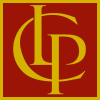Boris F. Domashnikov
Boris Domashnikov, the brilliant artist and corresponding member of the Russian Academy of Arts, was one of the most stricking followers of Russian Impressionism Art in Russia during the second half of the 20th century. He was shaped as an artist in post-war Ufa, where his teachers played a central role in developing his exceptional talent and in helping him realize his childhood dream of becoming an artist. Alexandr Tulkin and Porfiri Lebedev were the most important teachers to influence the young Domashnikov.
The early works of Boris F. Domashnikov, "Winter on the City's Edge", 1954 and "Sketch at the Dacha", 1954, and "Beloretsk", 1955, are based on sketches done in nature. These works are characterized by clearly noticeable details, light canvas texture, and delicate soft strokes, which convey a light airy milieu and subtle color transitions. In spite of chamber quality of his chosen motifs, Domashnikov lacks any trace of traditional melancholy or quiet harmonious stillness. The breath of nature, at times in full motion, at times tensely waiting, can be felt in his landscapes. The artist unexpectedly adds contrasting red and blue spots in the form of a red tram or blue sky to his complicated harmony of mostly silver and white tones of snow, thus achieving his own special "Domashnikov" coloring. His work, "Rinsing the Laundry" (1958), is the artist's transition from traditional genre sketches to the creation of his own artistic language.
During the 60's,Boris F. Domashnikov's painting became brighter and more conventional. the artist created his own special type of space with a powerful mountain range as a backdrop to a winding river or road with figures of people and houses (Industrial Landscape, In the Country, Spring in Yumatovo). Here the flatness of his treatment of space and conventional expression of volume are all the more evident. Form loses its tangibility and the role of color and rhythm is accented. Contrasts in size, rhythms, and two-dimensional space underscore the conventional content of the image. Moving away from realistic impression, the artist creates his version of the world of color. His technique reminds one of the French Pointillists, with the exception of his strokes, which are freer, more direct, and maintain a realistic energy. St. Sofia"s Cathedral in Novgorod, 1968; View of Novogorod, 1970)in a realistic energy. In his Pskov and Novogorod cycles, (In Pskov, 1960; St. Sofia's Cathedral in Novgorod, 1968; View of Novgorod, 1970) streams of light burst onto the canvas, embracing and brightening its colors, which break into a multitude of hues, changing the color of the cathedrals before the viewer's very eyes. This conventional decorative treatment reaches its maximum development in his series of Moscow works of the '70's. (The Kremlin, 1970; The First of May, 1975). People, banners, architectural monuments all blend into a bright flow. The predominant color is red in all its tones. In the 80's, the artist returns to his Bashkirian and Ural motifs, which are the main themes in his works, (July. Noon, 1983).
The work of Boris F. Domashnikov, which brings together philosophical, thematic, and artistic principles, are without a doubt one of the greatest achievements of Russian Art of the second half of the 20th century. His style combines the heritage of Russian and European culture and Bashkirian folklore motifs and opened up new possibilities for the Russian Realist School.
1924- born in the village of Krigouzovjo, Ivanovo Region
1935- Domashnikov's family moved to Ufa, Bashkiria.
1945-50-studied at Art-Theater College in Ufa.
1949-participated in Exhibition of Bashkirian Artists in Ufa.
1953-participated in Exhibition of the Artists of Russia in Moscow.
1954-joined Art Union of the USSR.
1955-started series of works, "Along the Southern Urals".
1957-Silver Medal at Worldwide Festival of Students and Youth in Moscow for the work, "Evening on the City's Edge". Picture was acquired for collection of the Russian Museum in Leningrad, participated in All-Russian Exhibition in Moscow, awarded Honors Diploma by Ministry of Culture.
1958-59-started a serious series of artworks devoted to Novgorod and Pskov.
1961-trip to Samarkand.
1963-personal exhibition in Leningrad and Ufa.
1965-participated in the second art exhibition,"Sovietskaja Rossia", Moscow.
1972-personal exhibition in Moscow.
1973-personal exhibition in Prague, Karlovy Vary,(Czechoslovakia).
1974-participated in Exhibition of Soviet Art in Sweden.
1975-participated in Exhibition of Soviet Art in Italy.
1975-77-series of works devoted to Red Square in Moscow.
1976-participated in Exhibition of Soviet Art in France, Holland, England.
1977-State Award of Bashkirian, USSR named for Salavat Yulayev; participated in exhibitions of Soviet Art at the Metropolitan Museum of Art, New York, Japan, Hungary, and Poland.
1982-awarded title of "People's Artist of the USSR.
1994 awarded title of "Honorary Citizen of Ufa".
1998-elected as corresponding memeber of Russian Academy of Arts.
2002-personal exhibition in Ufa.
2003-personal exhibition, NB Gallery, Moscow.
Boris F. Domashnikov died on June 21st. 2003 in Ufa.
Please contact our Gallery for additional
information about this artist.




